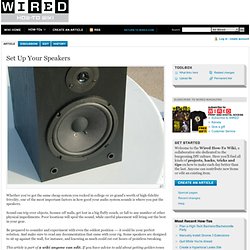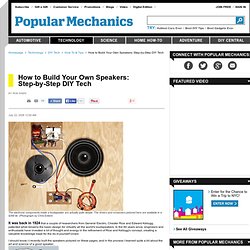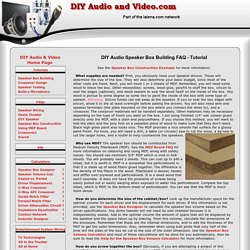

How to Be an Audiophile on the Cheap. This is a terrific post.

It's such a bummer to see people brush off "audiophiles" because they think quality sound is out of their price range. Even for people uncomfortable with DIY solutions, like myself, relatively cheap, superb audio is extremely possible. If you do your research you shouldn't have any trouble building an incredible system from scratch (receiver, source, speakers and cables) for well under $1,500. I've just gotten hooked by cheap audiophilia myself, so I thought I'd share some of my findings: Stereophile's "The Entry Level" Column: [www.stereophile.com] Stephen Mejias write a terrific monthly column about his experience ditching his expensive gear to try out notable cheaper equipment. CNET's Audiophiliac Blog: www.cnet.com/audiophiliac This covers a lot of pricey gear, but also hits on great budget components a lot.
If you're going the vinyl route, you can't go wrong with the Musical Fidelity V-LPS phono preamp for $99. Marantz PM 5004 ($450) Record Player: CD Player: Set Up Your Speakers. From Wired How-To Wiki Whether you've got the same cheap system you rocked in college or 10 grand's worth of high-fidelity frivolity, one of the most important factors in how good your audio system sounds is where you put the speakers.

Sound can trip over objects, bounce off walls, get lost in a big fluffy couch, or fall to any number of other physical impediments. Poor locations will spoil the sound, while careful placement will bring out the best in your gear. Be prepared to consider and experiment with even the oddest position —- it could be your perfect solution. And make sure to read any documentation that came with your rig. This article is part of a wiki anyone can edit. Pick a test track Before you roll up your sleeves, you need something to listen to. Getting the intro to "2112" stuck in your head may make you want to kill yourself, but hearing it over and over will help you identify subtle differences between two configurations. Start Flat. Pick the right spot. How to Build Your Own Speakers: Step-by-Step DIY Tech. The electronic components inside a loudspeaker are actually quite simple.

The drivers and crossovers pictured here are available in a $369 kit. (Photograph by Chris Eckert) It was back in 1924 that a couple of researchers from General Electric, Chester Rice and Edward Kellogg, patented what remains the basic design for virtually all the world's loudspeakers. In the 84 years since, engineers and enthusiasts have invested a lot of thought and energy in the refinement of Rice and Kellogg's concept, creating a valuable knowledge base for the do-it-yourself crowd. I should know--I recently built the speakers pictured on these pages, and in the process I learned quite a bit about the art and science of a good speaker.
At its core a loudspeaker is a surprisingly simple device. Hardcore speaker hobbyists take delight in figuring all this out for themselves, designing and building the crossovers and enclosures from scratch to see what comes out. The Jasper Circle Jig: A lifesaver! DIY Audio Speaker Box Building FAQ - Tutorial. DIY Audio Speaker Box Building FAQ - Tutorial See the Speaker Box Construction Example for more information.

What supplies are needed? First, you obviously need your speaker drivers. These will determine the size of the box. They will also determine your basic budget, since most of the other costs are fixed. Why use MDF? Bowers & Wilkins 800 Diamond - Bowers & Wilkins. Ceramic Speakers designed by Joey Roth - simple, modern full range drivers for desktop or entire room. How do I connect the Subwoofer to earlier versions (versions 1 and 2) of the Ceramic Speakers?

The Subwoofer is fully compatible with all versions of the Ceramic Speakers. The included RCA to 3.5mm cable is used to connect the Subwoofer to the 3.5mm input on the back of your original amplifier. The new version 3 amplifier connects to the subwoofer using the included RCA to RCA cables. How do I connect the Ceramic Speaker System to a record player? Most record players require a phono pre-amp to connect to the Ceramic Speaker System. What happens if a part breaks during shipping? Any part of the system, including ceramic components, that is damaged during shipping or does not work upon arrival will be replaced immediately, free of charge.
Will the Ceramic Speaker System work with international outlets? The system is compatible with 110v to 240v power mains, which covers every country in the world. Honey Claws - Digital Animal HQ + DL! Abney Park - Airship Pirate. Crookers - What up Y'all. Dragonette I Get Around (Midnight Juggernaut Mix) Apache.